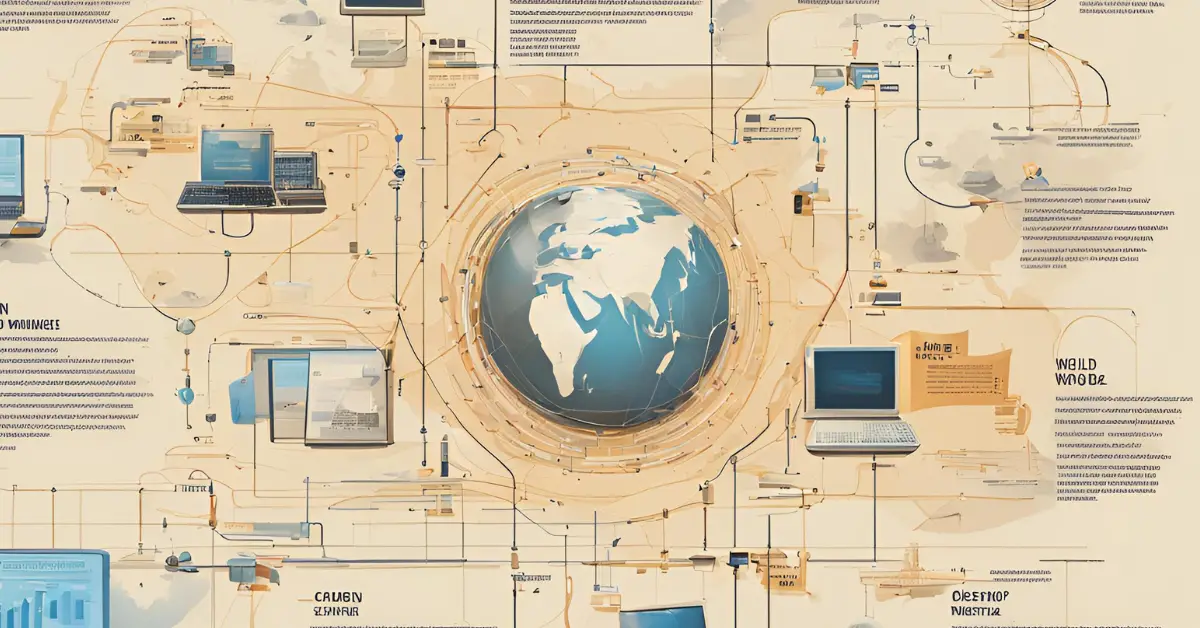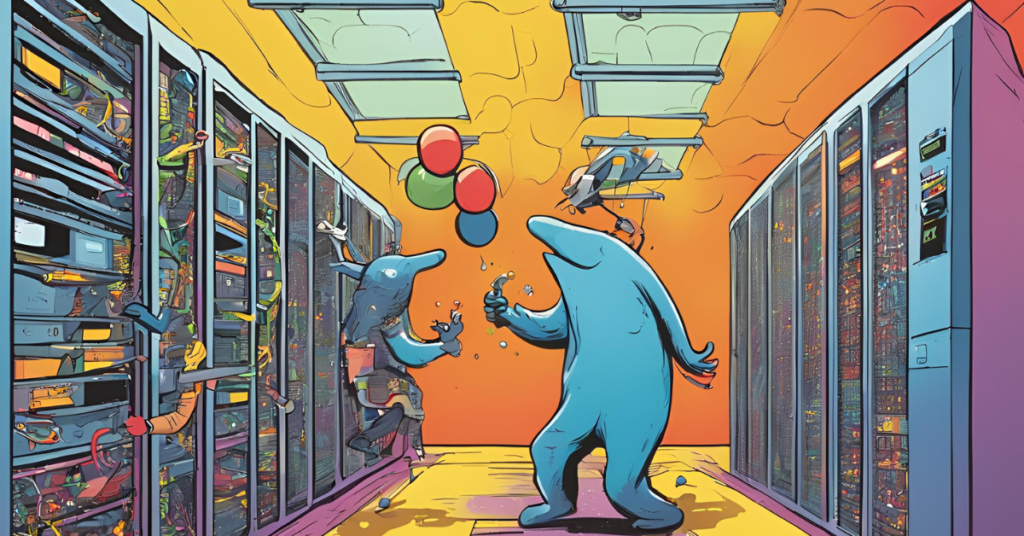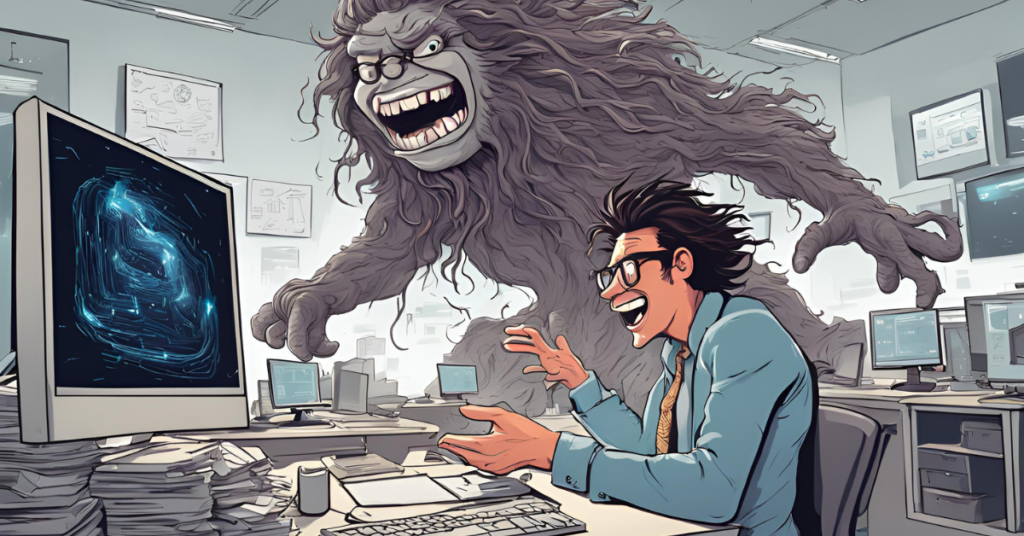
What is Web3? All About Web History and the Next Internet Revolution
Welcome to the future! Well, kind of. If you’ve been hearing about Web3 and wondering if it’s the latest version of Google Chrome, buckle up! We’re about to explore Web3. What is it? Where did it come from? Why is it not just a fancier version of your everyday internet?
Before we jump into Web3, let’s take a quick trip down memory lane. We should see how we got here by looking at Web 1.0 and Web 2.0 first!
The Evolution of the Web: A Brief History
The web didn’t become the digital powerhouse we know today overnight. There were major shifts in how we interact with websites and online tools. Let’s break it down.
| Web Version | Era | Description |
|---|---|---|
| Web 1.0 | 1990s – Early 2000s | The “Read-Only” web. Static pages, minimal interaction. Think brochure websites. Users could consume info but had little say in content. |
| Web 2.0 | 2000s – Present | The “Read-Write” web. This is the internet most of us use today. Think social media, blogs, user-generated content. The web became interactive. |
| Web 3.0 | Emerging | The “Read-Write-Own” web. Decentralization is key. Web3 promises user control over data, no middlemen, and the rise of blockchain technologies. |
Web 1.0: The Static Web
Imagine the internet as a giant library, except all you can do is read the books. That’s Web 1.0. This early stage of the internet was a one-way street. Websites were like digital brochures, offering limited interaction—users could read, but not write.
To put it simply, you were a passive consumer of content. The idea of social media, blogs, and sharing cat memes was far, far away.
Features of Web 1.0:
- Static websites: Think of pages built entirely with HTML, offering no real-time updates.
- Limited interactivity: No comments, likes, or shares—just read-only content.
- Content ownership: Content was owned by the website creators and hosted on centralized servers.
Web 2.0: The Social Web
Enter Web 2.0—the era of interaction and social connectivity. Suddenly, the internet wasn’t just a place to read; it was a place to participate, create, and engage.
Web 2.0 brought about platforms like Facebook, Twitter, Instagram, and YouTube. These platforms allow your grandma to comment on your vacation photos. User-generated content became the fuel driving this era. And this is where testing becomes a major factor in ensuring platforms can scale with millions of users.
Features of Web 2.0:
- User-generated content: Websites like Facebook, Wikipedia, and YouTube became popular for allowing users to contribute content.
- Interactive and dynamic: Websites weren’t just static anymore. You could comment, like, share, and even build your online persona.
- Centralization: Though interactive, Web 2.0 still had centralized platforms controlling most of the data and services.
So…What is Web3?
Web3 is the internet’s next leap forward—and this time, it’s all about putting control back in the hands of users. It’s like moving from renting a house (Web 2.0) to owning it (Web3). The goal is to break free from the control of tech giants. We are looking at you, Google and Facebook. The aim is to create a decentralized web powered by blockchain.
But what does that actually mean? Let’s break it down in tester-friendly terms!
Key Concepts of Web3
- Decentralization: Web3 runs on blockchain, which means no single entity (like Facebook or Google) owns or controls the data. Users own their data. Think of it like decentralizing your team—no single tester holds the whole project!
- Blockchain: This is the underlying technology that powers Web3. Think of it as a secure, distributed ledger that records transactions or data across multiple computers.
- Cryptocurrency & Tokens: Web3 enables digital economies with the use of cryptocurrencies like Bitcoin or Ethereum. These digital currencies are the backbone of transactions in Web3 applications.
- Smart Contracts: These are self-executing contracts with the terms of the agreement directly written into code. Think of a software testing automation script—but for legal agreements!
How Does Web3 Differ from Web 2.0?
Web3 and Web 2.0 are like night and day when it comes to how they handle user data and platform control. Here’s a table to compare:
| Feature | Web 2.0 | Web3 |
|---|---|---|
| Data Ownership | Owned by central platforms (e.g., Facebook) | Owned by users, secured by blockchain |
| Intermediaries | Tech giants act as middlemen | No middlemen—peer-to-peer connections through blockchain |
| Revenue Model | Ad-based, selling user data | Token-based economy (cryptocurrencies) |
| Security | Centralized security (easier to hack) | Distributed ledger (more secure but complex to manage) |
Advantages and Disadvantages of Web3
Before we go all-in on the Web3 hype, let’s weigh the pros and cons.
| Advantages | Disadvantages |
|---|---|
| User control over data: No need to rely on third-party platforms. | Complexity: Learning blockchain and cryptos can be tricky for non-techies. |
| Enhanced security: Blockchain is incredibly difficult to hack. | Scalability issues: Web3 is still developing, and current infrastructures struggle with large-scale adoption. |
| Transparency: Data is openly recorded on a public ledger. | Energy consumption: Blockchain technologies like Ethereum require massive amounts of energy. |
Why Should You Care About Web3?
If you’re a software tester, developer, or just someone with an eye on tech trends, Web3 matters. It’s reshaping the future of how we interact with the web. Imagine testing decentralized applications (dApps) where there are no central servers—sounds like a fun challenge, right?
As more apps shift toward blockchain-based systems, there’s a growing need for testers who understand these new platforms. You’ll be on the cutting edge of testing in a decentralized world.
Web3 – The Future or Just a Fad?
Is Web3 the internet’s final form? Or is it just the next stage in an ongoing evolution? One thing’s for sure—it’s shaking things up. The promise of a decentralized, user-controlled internet is both exciting and intimidating. For software testers, Web3 presents a whole new range of challenges and opportunities. You may be ready to dive in. Or, you might prefer to watch from the sidelines. Regardless of your choice, Web3 is something you’ll want to keep your eye on.
FAQs
1. What is Web3 in simple terms?
Web3 represents the next generation of the internet. It focuses on decentralization. It aims to give users more control over their data by using blockchain technology.
2. How is Web3 different from Web 2.0?
Web 2.0 is controlled by central platforms, while Web3 operates on decentralized systems where users own their data.
3. Do I need to know about blockchain to use Web3?
While it helps, you don’t need to be a blockchain expert to use Web3 applications. However, understanding the basics will be beneficial.
4. What is a dApp?
A dApp (decentralized application) runs on a blockchain network, unlike traditional apps that run on centralized servers.
5. Is Web3 the future of the internet?
It’s still developing. Many believe Web3 will be a major part of the internet’s future. This is especially true as blockchain technology advances.
![]()
Subscribe to QABash Weekly 💥
Dominate – Stay Ahead of 99% Testers!

